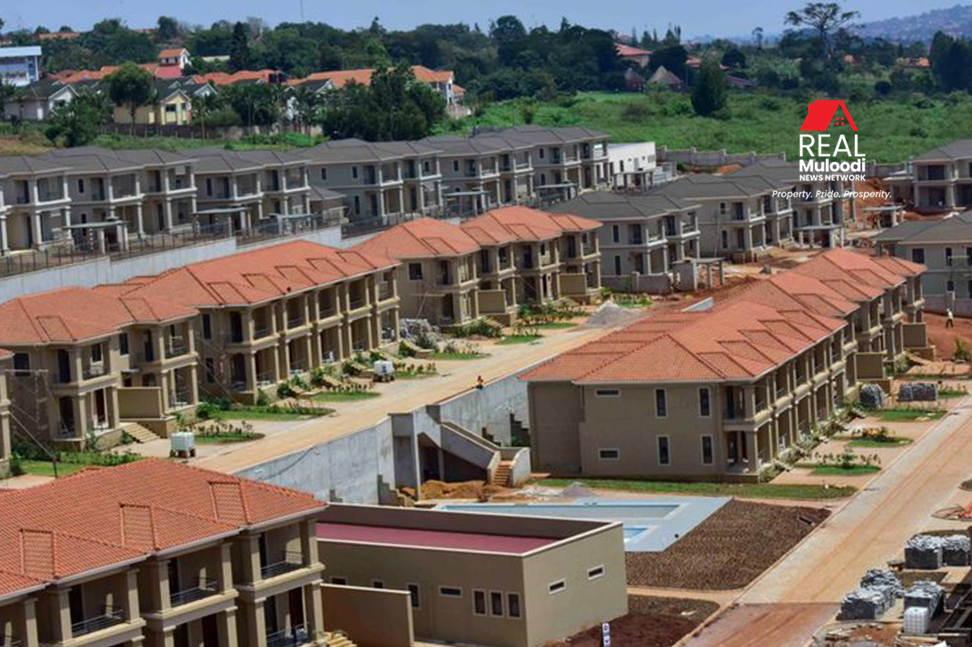UGANDA, Wakiso | Real Muloodi News | New rates for the National Social Security Fund’s (NSSF) housing developments in and around Kampala have been made public.
There are three categories of the new prices that were announced over the weekend.
There is the first category for affluent earners whose homes cost at least USh400 million. These are located in the neighborhoods of Mbuya and Lubowa, which are both five kilometers from the center of Kampala City.
The Fund reports that this category has 40 units, all of which have been sold.
Middle-class earners in the second group have houses valued between USh200 million and USh399 million. These are located in Temangalo, Wakiso District, 17 kilometers from the city center, and 13 kilometers from the city center in Kyanja.
In Kyanja and Temangalo, the units will be ready in June 2023 and 2024, respectively.
The third group is “affordable,” which also includes homes in Kyanja and Temangalo that cost less than USh200 million.
During the launch of the Lubowa NSSF Solana housing project, Mr. Richard Byarugaba, the managing director of the Fund, defended the expensive price of the homes by pointing to the cost of land.

“The cost of infrastructure and land are expensive. There are other problems that come with regulators such as the National Environment Management Authority, and also problems in procurement. So that cost must be borne by the customer who is going to buy the house,” Mr. Byarugaba said.
On around 600 acres owned by the Fund, a self-sufficient satellite city and commercial development project are under construction.
Last Thursday, on the 8th of September, President Museveni inaugurated the NSSF-run Solana Lifestyle and Residences housing developments in Lubowa, Wakiso District.
He was pleased with the Fund’s expansion to USh17 trillion since its founding in 1985.

The development will provide top-notch spaces for people to live, work, shop, stay, and play. It will be the biggest project in East Africa when it is finished, with 2,750 dwellings (apartments, townhouses, bungalows, and villas).
Along with these features, it will also have auxiliary facilities including office space, retail space, a hospital, a school, recreation centers, police stations, churches, green buffer zones, and a string of four parks along the river system.
A wastewater treatment facility, a security and communication system, and a road network are additional services and infrastructure.
Phases 1 and 2, which initially included 306 dwelling units and project infrastructure, started being built in December 2017 and are now ready for commissioning and sales.
“We have invested close to USD31m on construction materials that have been sourced from local industries and have created over 1,500 direct jobs and 3,200 indirect jobs through the construction of this project. These numbers will increase as we implement the next 8 phases,” he said.
He continued by saying that the increased need for formal housing projects brought on by rural-to-urban migration had a significant role in the Fund’s choice to build the Solana Lifestyle and Residences.
Byarugaba also mentioned the significant difficulties that had been encountered throughout the project’s construction, including fraud, stakeholder disagreements, land title problems, and infrastructural development.
“Our approach then was to divide the construction into four lots to successfully implement the project. Lot 1 included construction of bungalows, construction of apartments units for the second lot, townhouses and villas in the third lot and infrastructure development in the fourth lot,” he said.
The project now holds the first green mark district-certified eco-development in Africa and has received recognition with the 5-star award for Africa and Arab properties, Best Mixed Used Development in Uganda by the International Property Awards and Best Eco-development in Uganda.
The NSSF Chairman of the Board of Directors, Dr Peter Kimbowa, urged the government to enhance the development of public infrastructure to lower the cost of building such huge projects and, eventually, lower the final cost of housing for the house buyer.
By 2050, NSSF wants to provide adequate and affordable housing for 50% of Ugandans who live in urban areas. The Fund’s investment portfolio exclusively includes real estate to the extent of 7%.
NSSF created the Fund’s real estate strategy to have a national presence. Thus, it started a determined plan to ensure all residential and commercial projects are completed by 2025.
READ MORE LIKE THIS:
ADVERTISEMENT;
Who Really Owns the Lubowa Land, NSSF or Private Individuals?
State House Anti-Corruption Unit, Police Investigate Fake Titles on NSSF Land
NSSF’s Solana Housing Project Wins Two International Property Awards in London




